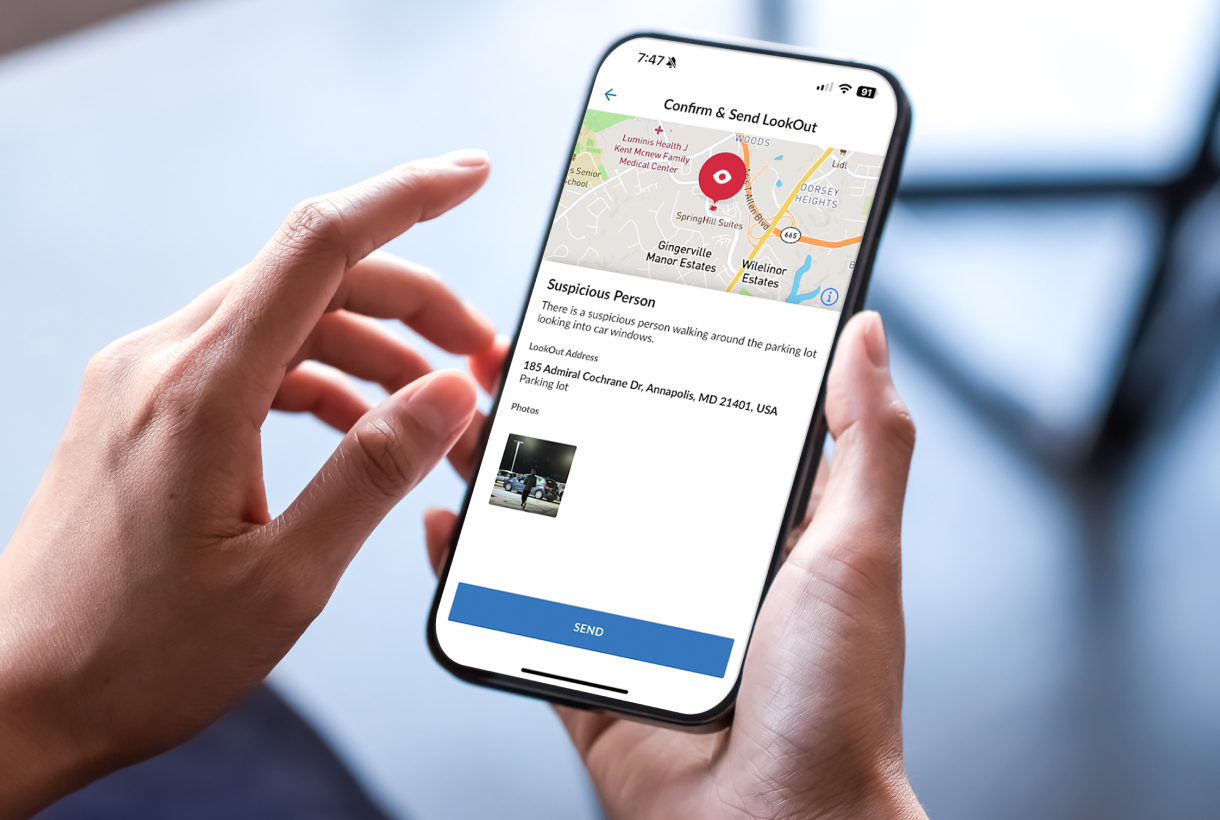Active assailant events can happen anytime, anywhere and impact businesses of any size or in any industry. Employees are concerned: According to an employee safety survey initiated by OnSolve¹, gun violence was in the top three concerns expressed by employees.
So what’s the best way to convey urgent information to your people if the unthinkable happens?
A mass notification system that provides clarity, speed and efficiency.
To get people to safety quickly, you should be prepared with an alert template. If an active assailant event occurs, the most effective alert will include a clear description of the threat and easily understood instructions for protection.
Of course, having the right message means very little if you can’t deliver it. An emergency alerting system that’s reliable and easy-to-use can help you get actionable intelligence into the right hands when it’s most needed.
What should you expect in an emergency alerting system? How do you know it will help you keep employees, visitors and partners safe if the unthinkable occurs?
Use this three-point checklist to help you identify the must-have features for a rapid response.
1. Click and Send
When every minute counts, you need a reliable means of reaching everyone. A redundant, cloud-based solution will keep you connected, even if your own servers go down. A simple, intuitive interface that requires minimal navigation will also save time during real-life emergencies.
You should be able to pre-load contact groups and draft alerts in advance, so that when the time comes, your alerts go out with just a few clicks. Be sure to look for API integration with business systems such as your company directory, so your contact database is continuously updated.
Emergency alerts should be just as simple and accessible for users to receive as it is for you to send. Ensure the platform you select offers customization options including translation into multiple languages, so your alerts are always understood.
Multi-modal delivery options are also a must. The system should give recipients choices for how they’ll receive different types of alerts, including text, voicemail, desktop alerts, email and in-app notification.
For example, users can opt to receive emergency alerts via text and all other notifications (scheduled building maintenance, weather-related delays, etc.) via email. The multi-modal feature is especially important for active assailant events when you may need to send alerts silently, rather than having everyone’s cell phone ring.
Improve Safety for Employees with OnSolve by Crisis24
Learn how OnSolve helps organizations enhance employee communications and safety and fulfill duty of care with mass notifications and emergency alerting.
2. Stay Attuned to the Situation
In an active shooter situation, circumstances are constantly changing. With up-to-the minute information, you’re better positioned to make the best possible decisions. For example, if the assailant’s location changes, you may need to instruct people in different sections of your building to use alternate routes for evacuation.
Two-way messaging enables employers to quickly assess team members’ whereabouts and status during and after a critical event. You can confirm receipt, assess safety, coordinate with others and gain a better understanding of what’s happening.
In these volatile situations, your alerts get to the right people at the right time. With a geo-targeted emergency mass notification system (EMNS), you can notify only those stakeholders who are within the zone of impact. You can also warn oncoming shift workers to avoid the area, as well as members of your supply chain who may be on the way.
3. Drill and Improve
Real-world safety drills are an important part of emergency preparedness. When evaluating a potential EMNS, ask about its system testing and simulation features. Both leaders and staff need the opportunity to familiarize themselves with the technology. By orchestrating drills for different circumstances, you can determine what works best for your organization.
Be sure to consider how you’ll handle situations such as blocked access to the elevator during an evacuation. Do you have staff who’ll need help getting down a staircase? Considering these details in advance is part of meeting the duty of care to your employees.
For both process improvement and legal accountability, it’s important to receive a post-event audit trail. This gives you a record of all communications during a critical event. In the weeks and months following, this record will provide valuable insights into the timeline of the event and the effectiveness of your safety procedures. A platform that works seamlessly with all smartphone operating systems will ensure all communications are captured and recorded accurately.
Finally, don’t overlook the quality of vendor support. Your EMNS should be fully operational and able to send alerts within days of partnering with a provider. Access to 24/7/365 customer support is a priority, so you have knowledgeable, ready assistance with sending alerts, increasing enrollment, handling system questions or anything else that may arise.
Active assailant events are a frightening prospect, there’s no way around it. Taking proactive steps to prepare can save lives. When you can reach everyone effectively, you’re in a much better position to keep your people safe. Learn more about how OnSolve Mass Notification can help you keep your people safe and informed when it matters most.
¹Data is from an employee safety survey OnSolve initiated of more than 600 U.S. employees across several industries.


